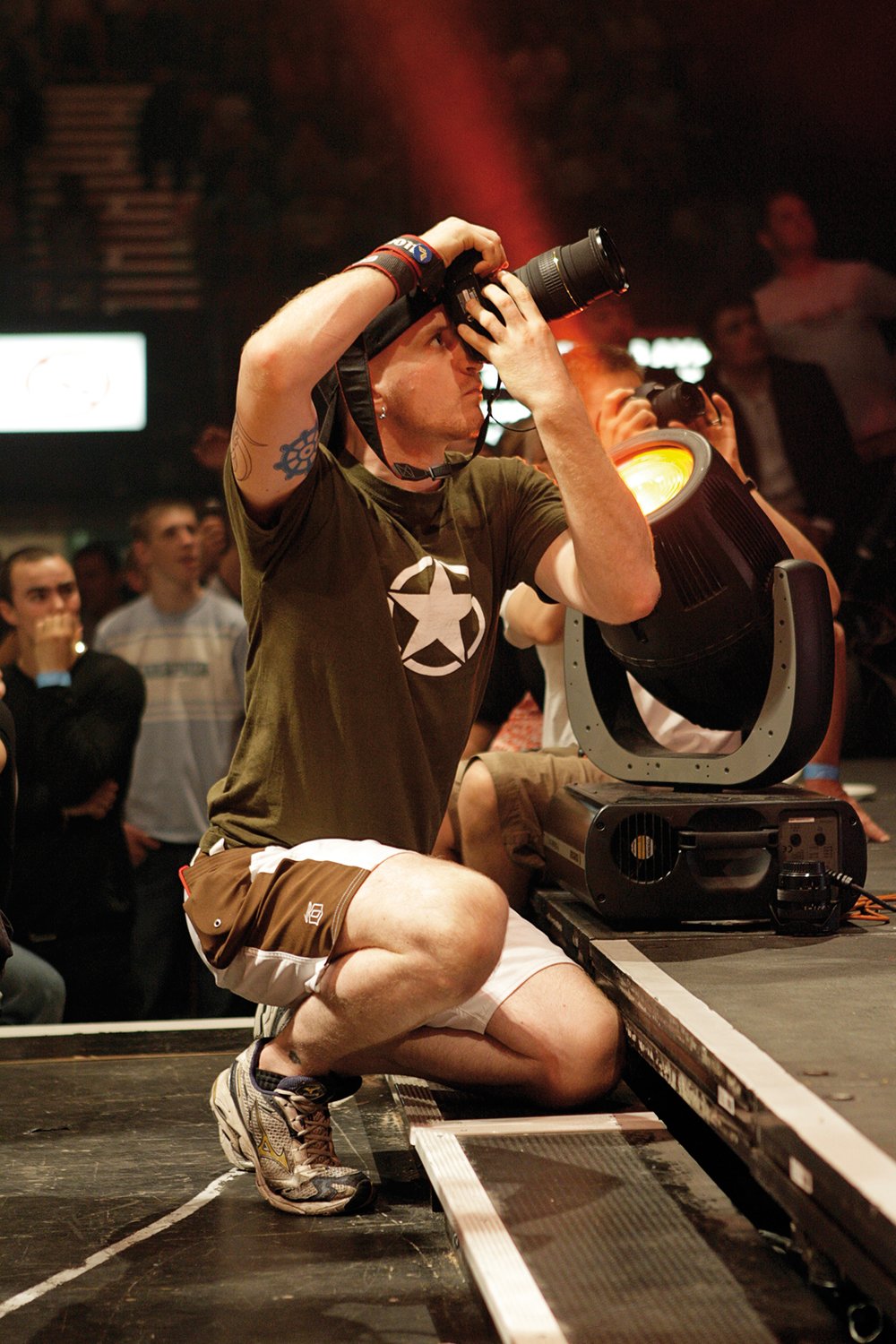
Issue 018
October 2006
Notes from Ringside by Hywel Teague
Go on any internet forum and you will see people asking “How can I get into MMA?” For fans of the sport, this is a natural thing. Of you reading this column, who hasn’t watch a bit of MMA on TV and felt like having a spar with your mates? Maybe you haven’t got any mates who are up for it though, and are resigned to grappling with your kids or the dog (dogs actually make good grappling partners, they are a nightmare to hold down and impossible to armbar).
Some want to follow this desire to rumble a bit further though, and get themselves down their local MMA gym. Maybe some people have got dreams of becoming the next UFC champion, or maybe its more appealing than spending a night in watching crap telly, but some guys get bitten by The Bug (yes, its worth capital letters now, it’s a bona fide thing this Bug).
Once the bug has got their teeth sunk deep into the poor unfortunate weekend warrior, that’s it, they absolutely have to get in the ring. In the majority of cases, a career in MMA is just not attainable. It requires a special blend of athleticism, desire, support and most importantly, talent, to make it as an MMA fighter.
But that doesn’t stop people from trying. In my position as editor of Fighters Only, I go to many MMA events. It may seem glamorous to you but believe me, the endless train journeys, overpriced service station sandwiches and travelling to backwater towns you’ve never heard of isn’t all its cracked up to be. For a start, not every MMA event is like the UFC. Many are held in small venues and quite often the standard of the fights is appalling. This is because there are people out there who just shouldn’t be fighting, but are.
MMA lacks any kind of governing body, and while events are not unlicensed, they are in effect unsanctioned. This means that there is no kind of independent overseer making sure that fighters meet a certain standard. Whether someone appears in a ring or cage or not rests solely with the promoter, and because of this, some fighters step into the ring wholly unprepared and unsuitable for what awaits them.
You see, without a credible and enforced amateur system, prospective fighters are able to jump straight into professional competition from the off. While some fighters (who may have backgrounds in other combat sports) are able to pull this successfully, there are cases where those who have maybe six months training under their belt are entering MMA events with full UFC-style rules.

Lets take a second to think about this and compare it to other professional sports. Can you imagine someone, who upon discovering boxing, decides he wants to be the next champ. The only problem is, he thinks all that years in the gym nonsense doesn’t apply to him, and he wants to step in and fight a professional bout straight away. He goes in full of bluster and maybe with a move or two, but meets someone who knows the game, has progressed through the amateur ranks and has earned his place in the ring. Our wannabe will find himself face down before you can say “over eager”.
Looking at other sports, all of them have structured amateur programmes designed so that people can develop their skills before being thrust in the limelight. Looking at combat sports in particular, in boxing to progress to the pro ranks you must have fought as an amateur. Then someone will go to your gym to see you spar with a pro so as to gauge your level, and only then, after all the medical and physical tests, may you be permitted to box.
Thai boxing in this country has the three-tier class system, with A being the professional fighter and C being amateur. Before you can advance from C to B class, you must fight a certain number of bouts and pass a fitness test. To go from B to A requires further experience and a certain number of verifiable victories.
If we look to countries such as Japan and America, we can find evidence of similar paths for prospective fighters. Shooto has a class system similar to that of Muay Thai. C class is amateur Shooto (with headgear and shinpads) and A is the highest professional level where fighters such as Takanori Gomi, Shaolin Ribeiro and our featured fighter this month, Joachim Hansen, all fight.
Recently the Californian Athletic Commission almost denied Cesar Gracie the chance to fight Frank Shamrock as they could find no evidence of his supposed 12-fight MMA record. It is said that fabricated records from Brazil were used to get him in the ring, only for him to be destroyed by the far superior Shamrock. If this isn’t undeniable proof that a fighter going into professional competition without enough experience isn’t a mistake, I don’t know what is.
If you’re thinking of stepping in the ring, think twice. Have you trained long and hard enough? Do you have the right people behind you? Have you gained experience through amateur or semi-professional competitions? If you can honestly answer yes to all of these questions, think about it some more, and then decide if stepping in the ring is for you. Getting into MMA without the right preparation may well be setting yourself up for a fall.










